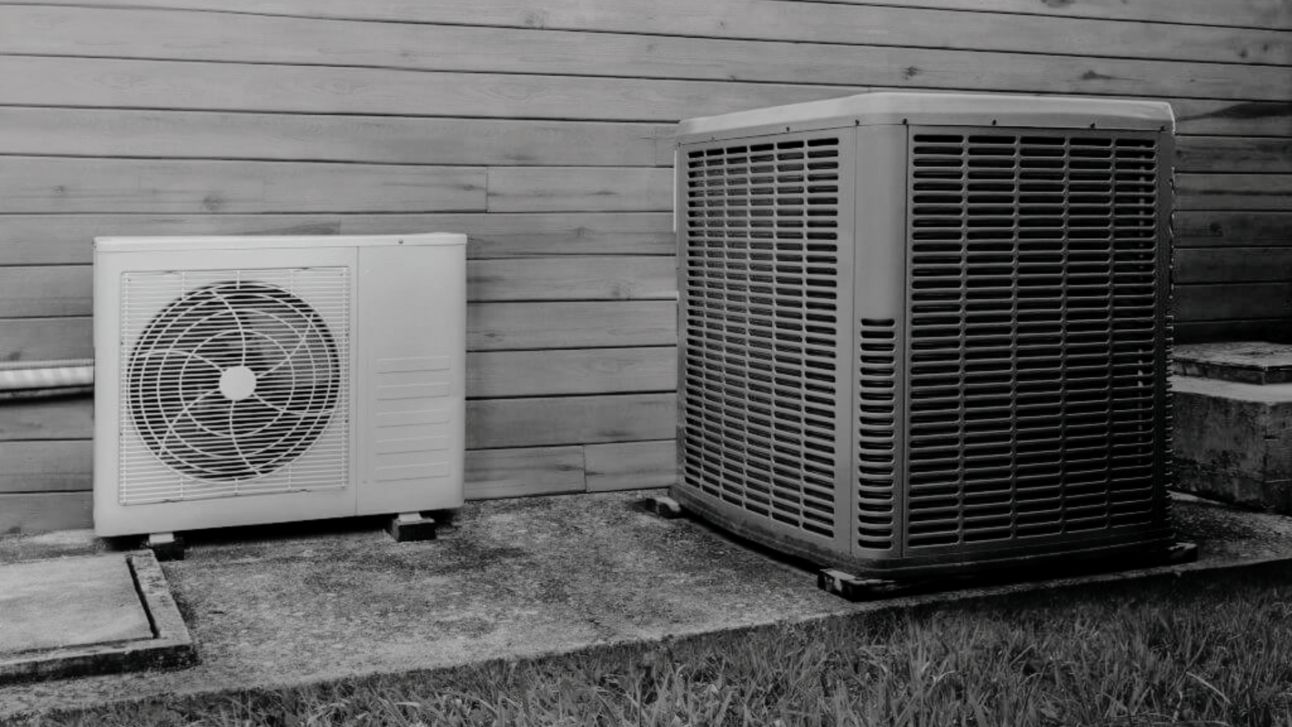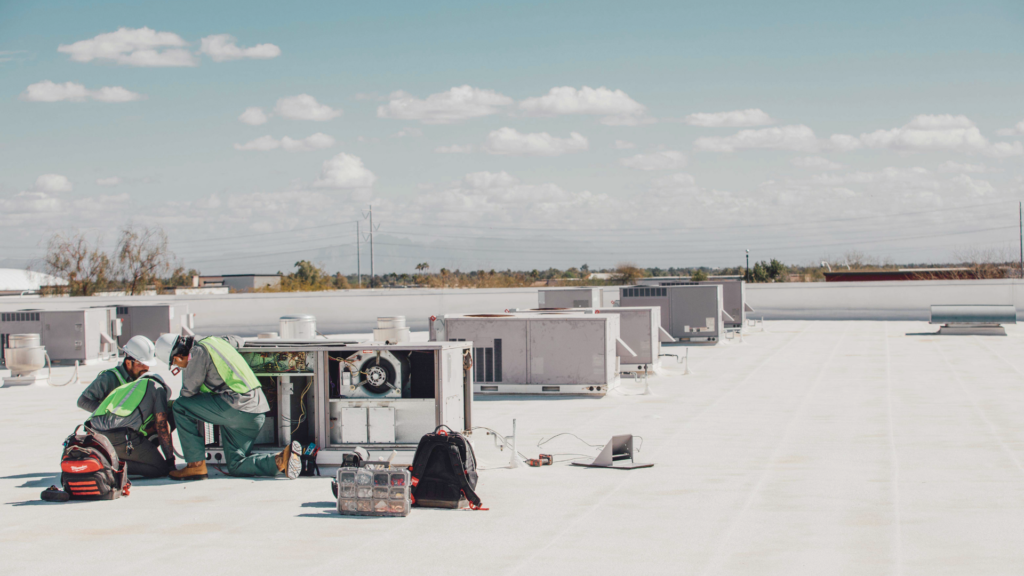The State of HVAC: 2024
In 2023, the HVAC industry saw a lot

Modernize
The big picture
- 🗞 Two pieces of legislation currently impact residential HVAC
- 💰 Private equity is a force to be reckoned with
- 🚢 Supply chains have gotten better
- 📈 Manufacturers are going to raise prices
- 👷♀ The labor shortage is still a problem, but there are ongoing efforts to solve it
- 🤷 Consumers aren’t actually doing that bad
Over 140,000 HVAC contractors operate in the US — in an industry that some value at over $100 billion and is set to grow 6% a year through 2030.
In 2023, the HVAC industry saw a lot: continued activity from private equity, preparations for another refrigerant step-down, back-and-forth on the upcoming rebate programs, an ongoing labor shortage, and more.
These developments, along with others, are shaping the industry (particularly the residential side), and here’s a pulse on each of them.
—
Two pieces of legislation currently impact residential HVAC
As part of the 2020 AIM Act — which gave the EPA authority to phase down the production and consumption of HFCs like R-410A — another 30% production cut will go into effect this year.
- A2L refrigerants including R-454B and R32 have been identified as the best replacement options, and manufacturers have already started producing equipment that utilizes A2Ls.
- Right before Christmas, on December 20th, the EPA changed its most recent rule, allowing a sell-through period of certain R-410A equipment until January 1, 2026, instead of January 1, 2025, as originally planned.
The 2022 Inflation Reduction Act extended the 25C tax credit program — which lets homeowners claim a 30% tax credit up to $3,200 for energy-efficient upgrades — until 2032 and allocated nearly $9 billion for two home rebate programs.
- The rebate programs — called HOMES and HEAR — are largely directed toward low-to-moderate-income consumers and will be rolled out on a state-by-state basis.
- States are reviewing guidance from the Department of Energy (DOE) and putting together applications — they have until January 31, 2025, to apply. No programs are currently active.
- Unlike the rebate programs, the 25C tax credit is active. And it resets annually, so homeowners can take advantage of it every year to make upgrades — until 2032.
- Of the $3,200 max credit, $2,000 is for heat pumps, and the remaining $1,200 is meant for other upgrades like insulation material or panel boxes.
We talked through both of these — the phasing down of HFCs and the tax credits and rebates — in detail with Joseph Hark of American Residential Services (ARS). Read our conversation here for more on each.
Private equity is a force to be reckoned with
Private equity continues to make its impact on the industry. Per Capstone Partners, there were 129 HVAC acquisitions completed through the end of November 2023, down 20% year-over-year. Reasons for the decline include economic uncertainty and higher lending costs.
With that said, zooming out tells a different story. There were still over 3x more deals done in 2023 than there were in 2018 — which saw only 38.
- Private equity platforms generally favor residential-focused contractors given the recurring revenues from maintenance agreements and insulation from swings in the construction industry. On the flip side, commercial or new construction-focused contractors are less favored and typically command lower multiples.
While platforms see obvious business benefits to rolling up companies — shared services, purchasing power, etc — some contractors say there’s a dark side. Jeff Howard, an engineer in Indiana whose company was rolled up, said, “You saw this big shift in focus to just replace more boxes, and not care about the clients, not care about the employees. There was a mass exodus of talent and technicians.”
Nevertheless, a big slowdown seems unlikely anytime soon. Private equity (and the financial world in general) has always jumped when it sees opportunities. And the trades — especially HVAC — have great dynamics for consolidation.
Supply chains have gotten better
During the height of the Covid crisis, things were tough. Carrier CEO Dave Gitlin said they had a “supply chain war room” running 24 hours a day, and Trane mentioned it was in conversations with “tier 3 and tier 4” suppliers. Since then, however, improvements have come through in the numbers.
“Delivery times are falling, port congestion is close to normal, product shortages are receding and global inventory levels are rebalancing… Over the course of the past year, but in particular in 2023, global supply chains have eased remarkably quickly,” said Bloomberg.
- The same report also noted that since their peak levels in 2021, global shipping costs have dropped 90%.
Looking ahead, manufacturers are actively investing to ensure they’re better protected in the case of another Covid-like event. S&P Global noted, “As supply chains return to normal… The air conditioner manufacturers are turning their attention to long-term sourcing strategies to both reduce long-term costs and to ensure resilience for the next surge in demand.”
Carrier, for example, is turning to dual-sourcing and automation. CEO Dave Gitlin told CNBC that a few years ago, 25% of Carrier’s critical components were dual-sourced, and they recorded 1 million “automation hours.” Now, they’re on their way to 6 million automation hours, with 75% of critical components being dual-sourced.
Manufacturers are going to raise prices
Carrier and Trane’s CEOs discussed their market observations at a Morgan Stanley conference in September. Put simply, units utilizing A2L refrigerants are more expensive to produce, and R-410A prices are expected to rise, leading to necessary price increases.
- “Considering cost pressures on R-410A, higher prices from R-454B, and a typical, annual price increase, Carrier’s Dave Gitlin said: ‘We’re probably looking at about a 15-20% price increase over the next two years attributable to those three elements,’” Homepros reported.
On January 5th, it officially started when Carrier announced price increases ranging from 6-10%, effective March 4th.
The labor shortage is still a problem, but there are ongoing efforts to solve it
In the next five years, the industry will be over 200,000 people short to meet the current job demand. While there are ways to address the gap — by investing in technology and employee retention, for example — there are also companies working to attract and bring in new talent.
To name a few, there’s National Technical Institute, the trade school, Work With Your Handz, the staffing agency, and Explore The Trades, the non-profit. Plus, there are winds at the industry’s back: declining college enrollment and increasing interest in apprenticeships.
Between 1985 and 2010, college enrollment increased by 2.2% a year, but from 2011 to 2021, enrollment decreased by 1.6% a year. On top of that, there were about 214,000 16 to 24-year-olds enrolled in apprenticeship programs in 2022, more than double the amount from the decade prior.
Consumers aren’t actually doing that bad
The economy is huge and complex, and for every narrative, there’s a counter-narrative. Despite current uncertainty, a few data points show that consumers — who may “feel” like things are bad — seem to be doing okay.
On one hand, interest rates remain elevated, which isn’t ideal for financing purposes. On the other, however, home prices have increased 36% over the past few years, leaving homeowners sitting on equity gains. And personal incomes are up, too.
The rate of inflation has come down from its 9% high in 2022 to just over 3%; the percentage of household debt to income has basically been flat over the past five years (even while the total dollar amount of debt has increased); and consumer spending has gone straight up since 2020.
—
It’s a good time to be in HVAC
To put on private equity’s hat for a second, a few long-term dynamics make (residential) HVAC attractive:
- The average US home is over 40 years old, which will drive the need for repairs and replacements as aging equipment breaks down.
- Millennials — not exactly DIYers — are a growing percentage of the overall homeowner base.
- We’re millions of homes short of meeting demand, which should drive new construction, and in turn, grow the installed system base.
- The government is subsidizing the installation of heat pumps — which have higher average tickets and shorter lifespans — through tax credits and the upcoming rebates.
Each development — the labor shortage, price increases, refrigerant phase-down, private equity, etc — will impact the industry in its own way. And it’d be naive to say there won’t be challenges ahead; 2024 might be a volatile year. But all things considered, long-term, the HVAC industry is a good place to be.
📬 Get our stories in your inbox
Keep reading
ChatGPT’s parent company eyes home services
OpenAI, ChatGPT's parent company, on Thursday rolled out a feature that can find, message, and hire contractors on consumers' behalf
U.S. HVAC revenues eclipse $150 billion, report shows
The first in a two-part series of takeaways from HARDI's 'State of the Channel' report, including industry trends, data, and contractor input
Industry Voices: Service Business Mastery’s Tersh Blissett
November 27, 2023


